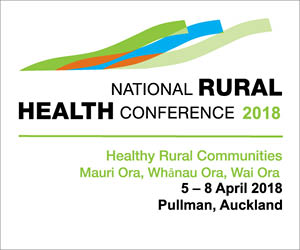CLINICAL BOTTOM LINE
Strategies to improve hand hygiene compliance are effective and justified but it is unclear which strategy or combinations of strategies are the most effective.
CLINICAL SCENARIO
You know hand hygiene is the simplest and most effective way to prevent the spread of healthcare-associated infections. So compliance with hand hygiene is therefore a key patient safety issue. You are charged with improving hand hygiene compliance in your area but what is the best way to do this?
QUESTION
Which (if any) intervention strategies improve healthcare staff compliance with hand hygiene?
SEARCH STRATEGY
PubMed Clinical Queries (Therapy/Narrow): hand hygiene compliance
CITATION
Gould DJ, Moralejo D, Drey N, Chudleigh JH, Taljaard M. Interventions to improve hand hygiene compliance in patient care. Cochrane Database Syst Rev 2017; 9:Cd005186. doi: 10.1002/14651858.CD005186.pub4
STUDY SUMMARY
A systematic review to assess the short and long-term success of strategies to improve hand hygiene compliance, and to determine whether an increase in hand hygiene compliance can reduce rates of healthcare-associated infections (HCAI). Inclusion criteria were:
Type of study: randomised trials, non-randomised trials, controlled before-after studies, and interrupted time series analyses (ITS). Excluded were studies involving surgical hand disinfection and surgical scrubbing.
Participants: nurses, doctors and other healthcare workers.
Intervention: any intervention intended to improve compliance with hand hygiene using soap and water or alcohol-based products, or both.
Outcomes:
Primary outcome: Hand hygiene compliance.
Secondary outcomes: Reduction in HCAI or colonisation rates by clinically significant nosocomial pathogens e.g. MRSA.
STUDY VALIDITY
Search strategy: Electronic databases searched were MEDLINE, EMBASE, CINAHL, and the Cochrane Central Register of Controlled Trials (CENTRAL) to Oct 2016. The search for unpublished studies was comprehensive. No language restrictions were applied.
Review process: Three authors screened the search results for potentially relevant studies; four authors independently selected the studies; two extracted data using a standardised form; and two authors conducted risk of bias assessment. All work was checked by others. Discrepancy resolved by discussion.
Quality assessment: Yes, via Cochrane Effective Practice and Organisation of Care ‘Risk of bias’ criteria (adjusted for different study designs).
Overall validity: A good-quality review involving a large number of studies of varying quality and study design.
STUDY RESULTS
The search yielded 4,219 abstracts (excluding duplicates), from which full text of 534 studies were assessed for eligibility and a further 511 excluded. Included in the review were 26 studies (three studies located from an earlier review). Of these studies, 23 were conducted in acute care settings. Fourteen were randomised trials, two were non-randomised trials and 10 were ITS studies. Fourteen studies assessed the success of different combinations of strategies recommended by the World Health Organization (WHO).
Strategies consisted of the following: increasing the availability of alcohol-based hand rub (ABHR), education for staff, reminders (written and verbal), different types of performance feedback, administrative support, and staff involvement. Twelve studies evaluated the effectiveness of single interventions as follows: performance feedback (six studies), education (two studies), cues such as signs or scent (three studies), and placement of ABHR (one study). Eight studies reported either infection or colonisation rates. Substantial heterogeneity between studies meant that it was not sensible to pool data using meta-analysis.
Compared with no or different interventions, multimodal interventions that included some but not all strategies recommended by WHO may slightly improve hand hygiene compliance. Multimodal interventions that contain all strategies recommended by WHO plus additional strategies (WHO enhanced) may also slightly improve hand hygiene compliance. It was uncertain if multimodal interventions that included all WHO-based strategies improved hand hygiene compliance.
Single component interventions may also improve hand hygiene compliance, as follows: performance feedback (may improve), education (may improve), cues such as signs or scent (may slightly improve), and placement of ABHR close to the point of use (probably slightly improves). Hand hygiene compliance strategies may reduce infection or colonisation rate but certainty of evidence was low.
COMMENTS
Increases in hand hygiene compliance were small (less than 20 per cent) but larger than seen in control groups.
Certainty of evidence was generally low for all outcomes, there is an urgent need for methodologically robust evidence.
There is no ‘silver bullet’ for improving hand hygiene compliance. As with any effort to change behaviour, adapting strategies to local context and understanding of barriers is recommended, as is auditing improvement efforts and revising accordingly.
The Health Quality & Safety Commission New Zealand provides excellent resources for improving hand hygiene compliance at www.hqsc.govt.nz.
Reviewer: Cynthia Wensley RN, MHSc. Honorary Professional Teaching Fellow, University of Auckland and PhD candidate, Deakin University, Melbourne. [email protected].
Summary of results
| Types of intervention#
|
Hand hygiene compliance | Number of studies | Certainty of evidence |
| Multimodal; some but not all strategies recommended by WHO | Slightly improved | 5 | Low |
| Multimodal; all strategies recommended by WHO plus additional strategies (WHO enhanced) | Slightly improved | 6 | Low |
| Multimodal; all strategies recommended by WHO | Uncertain impact | 5 | Very Low |
| Single component strategies: performance feedback (six studies); education (two studies); cues (three studies); and placement of ABHR (one study) | May improve | 12 | Low to moderate |
| # Compared with different or no interventions: WHO. | |||






















